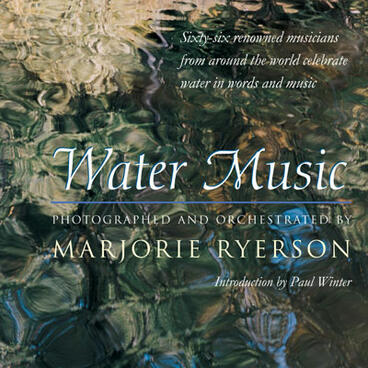Description
A photography book with a social conscience, Water Music affirms the intimate connection of water to the rhythms of our lives-and how it is something to be celebrated, revered, and preserved for today and for future generations. Water Music is first a tribute to the inspiration and magic of water. For photographer Marjorie Ryerson, a fascination with water grew from the challenge of capturing on film the astonishing breadth of ways in which water presents itself-the way, for instance, that Lake Superior at sunset turns from deep blue to gold, copper, blazing red, dusty pink, pewter, and, finally, shimmering black. To accompany the dazzling photographs, Ryerson recruited some of the most important names in music. These world-class artists, from twenty-two countries on five continents, and from across the musical spectrum, have contributed memoirs, stories, poetry, music, and lyrics for Water Music, reinforcing the beauty of the images and the powerful message they convey. For rhythmist Mickey Hart, the feel and sound of rain resulted in a kind of epiphany for him that has influenced his music ever since. Flutist Mary Youngblood explains that her life as a musician has been inextricably linked with having been born under the water sign of Cancer. Violinist Pamela Frank explores the many similarities between water and music, finding both essential for survival. Together, Ryerson's photos and the words and music of these renowned musicians remind us why we must heed the message in Paul Winter's introduction-in spite of our reverence and awe, we have placed this most essential element in peril. And so, we too are called upon to remind ourselves of the preciousness of water, before the damage becomes too severe to be undone. Water Music has thus become a piece of a much larger picture: the Water Music Project. Ryerson began the larger project not only to celebrate the beauty of water and its connection to music and to our lives, but also to increase awareness about water issues through concerts, lectures, events, and educational outreach. She is donating her net royalties from sales of the book to the Water Music Fund, established at her request at the United Nations Foundation. The UNF will use the fund to aid water in the natural environment and to provide clean drinking water for families around the world. Marjorie Ryerson is a teacher, journalist, photographer, and poet whose photographs have appeared in such publications as The Boston Globe, Country Living, Vermont Life, Yankee and the photography books The Vermont Experience and Vermont for Every Season. She is professor of communication at Castleton State College, where she teaches journalism and photography. Ryerson lives in Randolph, Vermont.

